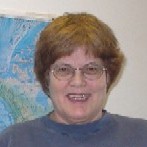

Brainerd Area Amateur Radio
Club
April 26, 2001 Meeting Presentation
 |
PSK31 aka "The Hot New Digital Medium"
presented
by Orcena Lyle WØQT
|
PSK31 is one of the "new" digital modes
which are highly developed because of computer/sound card technology.
PSK31 has become the most popular digital mode for live conversation.
"PSK" stands for "phase shift keying" in which the
modulation method is a change in polarity, as distinct from RTTY and others
which use frequency shift keying. "31" stands for a baud rate
of 31.25. Using polarity shifts makes it possible to use a narrower
bandwidth than is seen in the average CW transmission. Thus PSK31 can cut
through static and work weak signals.
Peter Martinez, G3PLX, wrote a "Varicode"
coding system, which he considered an extension of Morse Code, for PSK31.
He wrote the first popular PSK31 software program, also called PSK31. An
interface is needed between the computer and radio to do PSK31. The
interface consists of a potentiometer and an isolator. Various brands
and types of interfaces were discussed. The Rigblaster is the most
popular interface (even though it is the most expensive) because it is easy to
hook up and easy to use.
Currently, Digipan is the most popular software
program for PSK31. The Digipan program, hooked to HF with a Rigblaster,
was projected onto the classroom screen and some of Digipan's features
were pointed out. The "waterfall" feature shows, at a glance,
the stations which are transmitting. The stations' signals show up as vertical
yellow bars which scroll downward on the waterfall. It can be seen which
stations are strong and which are weak by how well they show up against the
background. The diamond-shaped cursor, when positioned over a station,
causes the text from the ongoing QSO or CQ to be printed on the screen.
A CQ can be done by clicking in an area of the waterfall which has no signal
activity and then transmitting CQ from that frequency. There is a write-ahead
feature so that text can be written while the other person is transmitting, to
be transmitted in turn. Macros make it easy to enter often-used phrases
and sentences.
A CQ was put out and answered by a station which
had a very weak signal. The signal faded and returned. Then
another station transmitted close enough to overlap the first station and
caused the first station's transmission (and our QSO) to be lost.
Some advantages and disadvantages of PSK31,
compared to phone, were given, as well as some experiences with PSK31 QSOs.
Operating tips were given; most importantly, to keep power LOW so as not to
overdrive the audio and take up bandwidth space which could otherwise hold
several (or many) signals. Another tip is to watch the waterfall before
transmitting in order to avoid coming in on other people's QSOs; an empty
space may be the pause between transmissions in a QSO. Also, wait awhile
after doing (or answering) a CQ, in order to give another station
sufficient opportunity to respond.
Orcy has seen many more foreign stations on
PSK31 than she has heard on phone.
Computer requirements for Digipan were discussed.
A bibliography in the handout gives references and URLs for articles which are
good summaries of PSK31 and/or which give many links to other URLs dealing
with PSK31.
For an e-mail copy of the PSK31 handout, which
includes clickable URLs for links to PSK31 information, please send a request
for it to Orcy at lyle@brainerd.net .
The e-mail copy will include some URLs which were not in the paper copy.
If anyone has questions about PSK31, feel free to contact Orcy (e-mail or
828-0351) who will try to answer the questions.
Back to the BAARC
Main Page
This page was last updated 12/19/2006


![]()
